By Eric Struck
Wide Receivers Coach/Passing Game Coordinator/Special Teams Coordinator
Washington High School (SD)
Twitter: @EricStruck
Introduction:
One of our favorite pass plays, and one that is popular with a lot of coaches, is the four-vertical concept. We want to run this play as much as possible but be able to give the defense different looks as well as take advantage of what the defense will give us. We feel that by adding a simple tag system allows us to be very diverse and multiple within our passing game but keep things very simple for our players.
Set Up
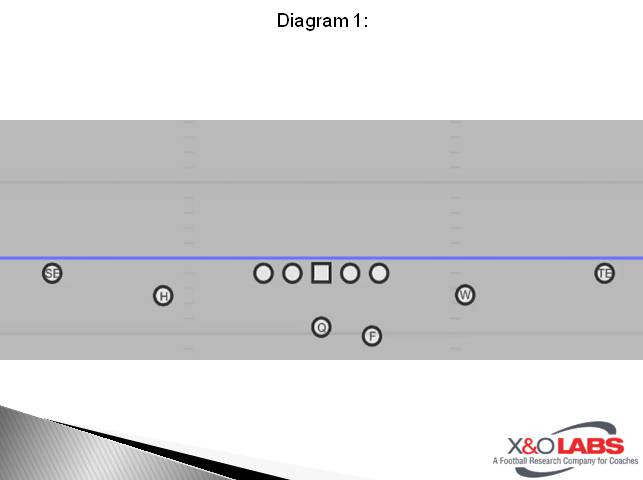
In our basic 2x2 formation (diagram 1) each one of our receivers has a rule as well as a specific landmark they need to follow. We tell our outside receivers that they own the numbers and we tell our inside receivers that they own the hash.
Along with sticking to their landmarks, our receivers are also executing a read as they run their route. Our outside receivers are reading the depth of the corners both pre-and post snap. They have what we call, the “Hitch Read.” As a general rule, if the CB is deeper than 5yds then they will execute a hitch route at roughly 5-7 yards. We tell them on their 5th step they should know if they are continuing vertical or hitching it up (diagram 2).
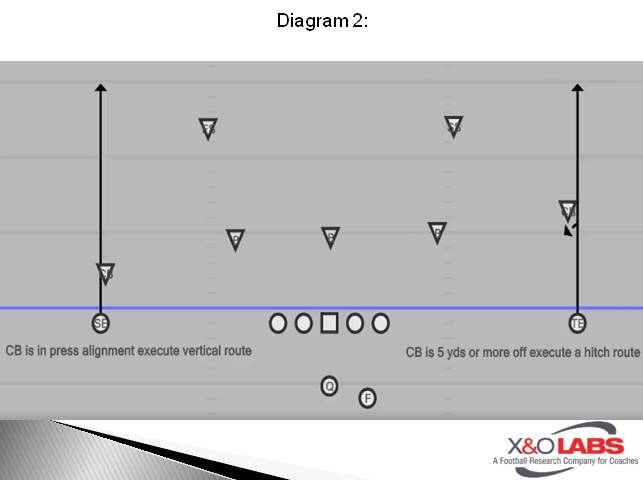
Our inside receivers have what we call the “Seam Read.” They will get a pre-snap read if the safety is over the top as well as a post snap read. Once the inside receivers reach 10 yds. and the safety is still over the stop then they will hitch up and work 3 yds. to either side of the hash and settle in a window (diagram 3).
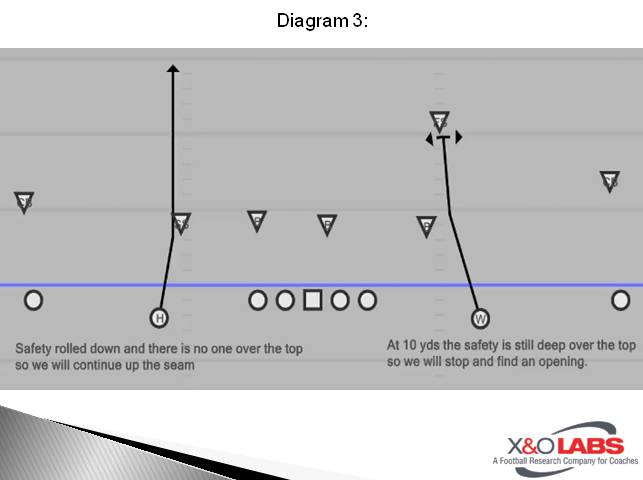
If there is no safety over the top, then they will continue to run the seam. We spend a lot of time working on this play and we feel we can execute it no matter the situation.
QB Read Progression
He will start by assessing the safeties. How many deep safeties are there? Our quarterback coach uses the terminology of “Open or Closed Roof.” An “Open Roof” would be 2 deep safeties and a “Closed Roof” would be a 1 high safety look. If it is an “Open Roof” our QB will read from the outside receivers to the inside receivers. If it is a “Closed Roof” then our QB will read from the inside receivers to the outside receivers.
With an "Open Roof" read the QB will read the depth of the Corner. If the hitch is there we will take it every time. If the Corner alignment does not allow for the Hitch then the QB will read the near safety. If safety stays on or close to the hash then the QB has a one on one match up the outside. If the safety widens then the seam route should open once we clear the alley defender.
Switch Tag
Our favorite tag for our Four Verticals concept is our “Switch” Tag. In our basic 2x2 formation, both sides would execute the switch tag (diagram 4).
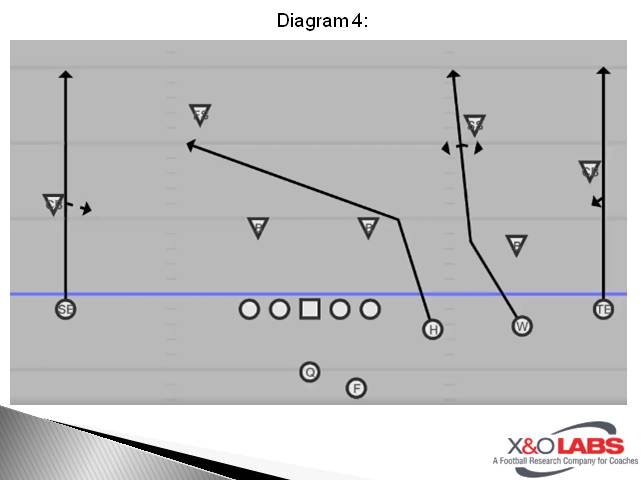
This tag applies to not only the release we want to execute but the reads on the route as well. Our outside receiver will push vertically 2-3 steps then work their way inside up the hash so that can execute the “Seam Read.” Our inside receiver will push vertically 1-2 steps then work behind the outside receiver and get to the numbers and execute the “Hitch Read (diagram 5).”
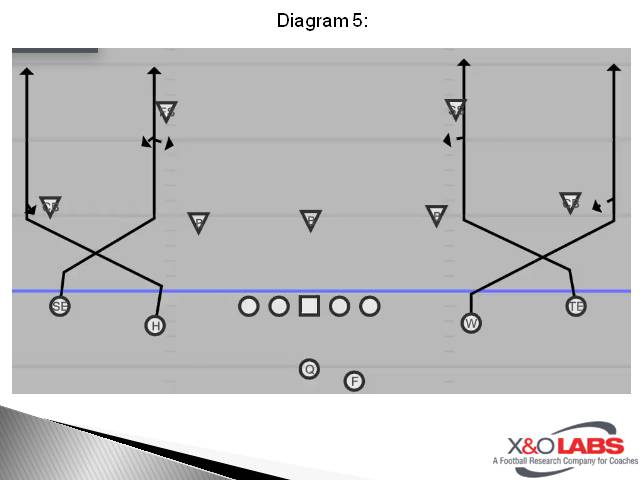
The great thing about the "Switch" tag is that the read stays exactly the same as our basic four vertical concept. If we are in a 3x1 alignment then the “Switch” tag applies to the 1st two receivers from the sideline. The inner most receiver will work to get vertically to the opposite hash and he no longer has a read. He is getting vertical no matter what the defense does.
We really enjoy the switch especially when we face a Cover 2 type defense or a defense who aligns their CB’s in press or a tight alignment. This allows for our receivers to get a fairly clean release off the line of scrimmage. With the switch release against a press corner we feel the “Switch” release gives us an opportunity to out leverage the corner with the slot receiver. The CB must carry the outside receiver and when he does this it gives our slot the opportunity to get outside and hopefully be able to gain a step or two advantage on the CB (diagram 6).
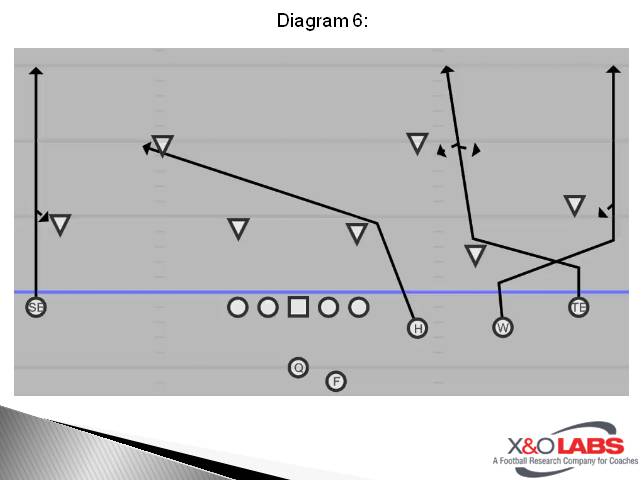
The “Switch” tag is also very effective when using motion. Faking the “Jet Sweep” action to the boundary and using the motion man to run the outside vertical route is a great way to out leverage the CB (diagram 7). This also takes advantage of a rotating secondary. If you are a team that uses a crack scheme or some type of switch blocking scheme on the perimeter, then the motion paired with the “Switch” tag can be especially effective against an aggressive alley player.









